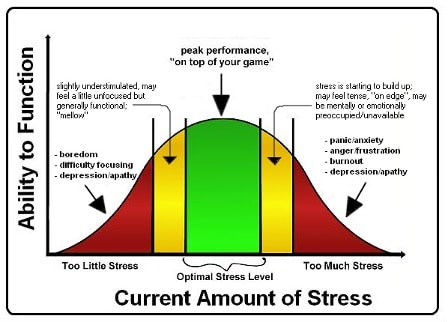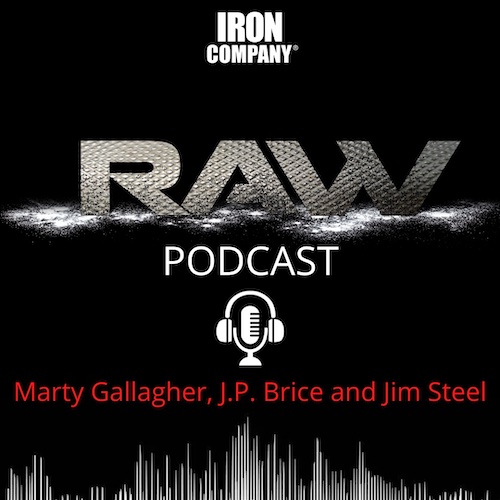
Resistance Training Stressors
Too much of a good thing is a bad thing
Successful resistance trainers build muscle and strengthen the body. This is done by creating overwhelming stresses. To attain the titanic twin goals of resistance training, i.e., build muscle and increase strength, the trainee must push up to, and past capacities. How do we improve upon current capacities if we never exceed them?
No one improves by doing less than what they are capable of. Where is the physiological incentive? If submaximal effort created progress and gains, this world would be overrun with muscled-up freaks. The average trainee is unaware of, or incapable of, generating training stresses sufficient and consistent enough to spark the “adaptive response.”
Hardcore progressive resistance training is self-inflicted trauma. If the training is not traumatic, it should be. The only way a muscle, any muscle, strengthens and grows is if it is sufficiently stressed (then fed and rested.) To grow a muscle, that muscle must first be mugged: shock-blasted in some way, shape, or form.
A 60% effort does nothing. Unless the body is presented with physically overwhelming challenges, there is no need for the body to grow new muscle or strengthen. When the muscle is regularly, repeatedly, and successfully “attacked,” (overwhelmed) in a progressive resistance session, the body, in its innate wisdom, constructs more muscle.
The body seeks to turbocharge itself; it adds more horsepower and torque (builds new muscle) to deal with repeated, ongoing, and unrelenting stresses – stresses past its current abilities, stresses it is incapable of handling. Submaximal stresses, at best, are used to tread water, to maintain capacities already built.
At the other extreme, too much physical stress will throw the athlete down the black hole of catabolism. If overtrained, underfed, and denied rest, the body breaks down. How much is too much? The gains lie right at the edge of the catabolic abyss. Ideally, we stride right up to the edge of too much. Using catabolic brinksmanship, the trainer squeezes all possible gains (build muscle, grow stronger, melt off body fat, become fitter) out of the workout.
The goal of “fit-ness” is to create a stronger, healthier version of your current self. This is accomplished by interlacing four disparate disciplines: resistance training, cardiovascular training, nutrition, and brain-train, i.e., the psychological aspects associated with the transformative process.
When weaving together hardcore resistance training and fat-burning cardiovascular exercise, the athlete can stay within the optimal stress zone in each – yet the combined cumulative pushes the athlete into the catabolic abyss. One predictable phenomenon: the conscientious athlete crushes himself in a result-producing upper body progressive resistance training session.
Fired up, the same athlete, now psychologically on fire, yet physically battered from the just completed lifting session, jumps on a treadmill and, with “fresh legs” (and an exhausted upper body) runs manically for 30-minutes. Both the lifting and cardio sessions, each on their own, were result producing; linked back-to-back, they were too much, the stress redline is crossed.
To compound this overkill, the trainee then repeats this identical scenario, lifting session followed immediately by a cardio session, 4-5 times per week. This is the classical bodybuilding template, use a split routine to attack specific body parts in the weight training session followed immediately with a cardio session, usually using a longer duration with steady-state pacing.
How many “significant” training stressors can an athlete (or serious fitness devotee) handle on a daily and weekly basis? If we assume that every training effort is significant enough to build muscle or melt off body fat – how many stacked sessions can you handle (without breaking down) during the training week? If a diligent trainee trains four to five days a week – does this trainee ever engage in a “rested state” workout? If you never train in a rested state, are you ever actualizing potential gains?
Diligent, consistent training is to be applauded. Perhaps the tenacity and disciplined adherence are misdirected? If the workout stresses are never-ending, when does recovery occur. How might a successful “rested effort” training split be constructed?
| Monday | squat, leg assistance; bench press, arms | (8 exercises, 50-minutes; 25 cumulative sets) |
| Tuesday | swim | (25-minutes, steam, sauna, whirlpool) |
| Wednesday | steady-state run – 45-minutes | (attain session avg, 130-140 heart rate) |
| Thursday | sprint session – 20-minutes | (8 “rolling start” cone-drills) |
| Friday | power clean, deadlift, overhead presses | (4 exercises, 40-minutes, 15 cumulative sets) |
| Saturday | swim | (25-minutes, steam, sauna, whirlpool) |
| Sunday | steady-state run – 45-minutes | (attain session avg, 130-140 heart rate) |
Two hardcore resistance training sessions, two longer, milder cardio sessions, one all-out sprint session, two swim days that include steam room, sauna, or whirlpool. Swim days utilize hydrotherapy to amplify recovery. If no pool access, substitute outdoor power walking, hot/cold showers, and stretching. Everyday a training stressor of varying intensities is undertaken. After the hardcore lifting days, the mildest form of cardio and flushing hydrotherapy. Speed sprint day is undertaken with three full days of rest from resistance leg training.
Another interesting side-effect of high-stress, hardcore resistance training: mental stress reduction. A truly hardcore training session short-circuits the conscious Mind. That is a good thing. The hardcore weight training session is of such herculean intensity (in relation to you) that Mind and body MUST unite to deal with the severity of the effort. There is no multi-tasking or amiably chatting with a training partner with a 400-pound barbell behind your neck on the 5th rep of a limit squat set.
There is a predictable post-workout after-glow associated with intense training, a mental bliss-state that factually is an advanced meditational state. The post-workout bliss state is characterized by an electrified mental silence and augmented by heightened alertness and a feeling of blissful contentedness. Truly intense training bludgeons the Mind into silence. This is a good thing. We think too much.
This exercise-induced mental silence enables the body to commence a repair and healing process. While the Mind is silent, the overheated psychological circuitry is allowed to cool down. There is no mental stress if there is no mental thought. Hardcore weight training and intense cardio are profoundly beneficial physiologically and psychologically: these exercise forms done right, create trauma, they create stress and bitch-slap the conscious Mind into silence.
When the perfect amount of exercise stress is administered while body is in a state of rested hemostasis, new muscle is built, the body is strengthened, body fat is oxidized, stamina and endurance optimized, mental stress alleviated and post-workout, you attain an advanced meditational state. What more could you want??
Stress can be your best friend or worst enemy. Learn how to surf stress, bend and shape stress, inflict it, and deflect it, all with subtle touch: not too little stress, not too much stress, just right stress. Stress applied at exactly the right time and in exactly the right dose. Don’t stack too many stressors atop one another and believe in the rested effort.
About the Author - Marty Gallagher
As an athlete Marty Gallagher is a national and world champion in Olympic lifting and powerlifting. He was a world champion team coach in 1991 and coached Black's Gym to five national team titles. He's also coached some of the strongest men on the planet including Kirk Karwoski when he completed his world record 1,003 lb. squat. Today he teaches the US Secret Service and Tier 1 Spec Ops on how to maximize their strength in minimal time. As a writer since 1978 he’s written for Powerlifting USA, Milo, Flex Magazine, Muscle & Fitness, Prime Fitness, Washington Post, Dragon Door and now IRON COMPANY. He’s also the author of multiple books including Purposeful Primitive, Strong Medicine, Ed Coan’s book “Coan, The Man, the Myth, the Method" and numerous others. Read the Marty Gallagher Biography for a more in depth look at his credentials as an athlete, coach and writer.



